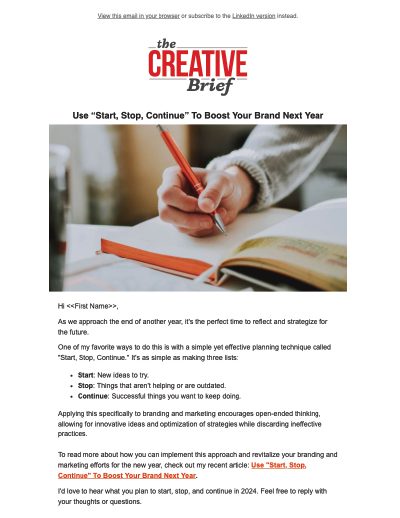Embracing Gratitude For Your Brand
In branding and marketing, the concept of thankfulness has become an important element. It’s more than just a passing trend; it’s a powerful strategy that creates a genuine connection with customers. I’ve been thinking about how thankfulness in branding can influence customer relationships and shape how people see a brand.
When a brand expresses gratitude for customers, it builds trust and loyalty. It also encourages customers to respond positively, which could lead to increased sales. Thankfulness can also help to build a sense of community, which can help to create a more positive brand image.
The Psychology Behind Gratitude and Loyalty
When brands show gratitude, it does wonders for building a strong emotional bond with customers. This isn’t just about feeling good; it’s about creating lasting loyalty. Brands like Zappos have set a great example. They send personalized thank-you notes to customers, turning them into passionate supporters. This strategy isn’t just nice – it’s smart business.
Customer Retention: Beyond the Purchase
In today’s competitive market, keeping customers is as important as attracting new ones. A personal thank you, a rewards program, or a special event can make customers feel valued and more likely to stay loyal. Take Starbucks as an example. Their rewards program does more than offer free coffee. It thanks customers in a way that makes them feel special and appreciated, strengthening their connection to the brand. For instance, Starbucks sends customers a personalized digital card on their birthday and rewards them with a special gift on their birthday, reinforcing their customer loyalty.
Positive Brand Image: The Socially Conscious Consumer
Today’s consumers aren’t just buying products; they’re looking at what a brand stands for. Thankfulness is a powerful way to show a brand’s values. It makes a brand seem more responsible and ethical. Patagonia is a great example. Their approach to showing gratitude has helped them connect deeply with customers, expanding their appeal and customer base. Patagonia encourages customers to donate their unwanted Patagonia apparel to those in need, and for every donation, Patagonia donates one article of clothing to a non-profit organization. Patagonia also donates 1% of sales to the preservation and restoration of the natural environment. A program that customers and the broader market embraces.
Differentiation Strategy: Standing Out with Gratitude
In a world of choices, being a brand that genuinely shows gratitude can make a huge difference. It helps a brand stand out and attracts customers who value caring and genuine connections. This sets the brand apart and builds a community of loyal followers.
Companies that express gratitude often receive more positive reviews, more engagement on social media, and more customers. This ultimately leads to an increase in the company’s revenue.
Amplifying Gratitude Online
Social media is a powerful tool for showing gratitude. When brands share their appreciation online, it resonates with people. This strengthens the bond with current customers and attracts new ones. Airbnb’s campaign of thanking its community is a perfect example. It significantly increased their online presence and enhanced their brand image. The campaign was so successful that it was replicated by other large companies, such as Apple and Disney. It was an effective way to show gratitude for their customers’ loyalty and support.
Feedback and Improvement: The Cycle of Gratitude and Growth
When customers feel appreciated, they’re more likely to give honest feedback. This is critical for brands to improve their products and services. It creates a positive cycle where customers help the brand grow. In return, the brand continues to appreciate their input and loyalty. The positive feedback from customers can also help brands gain a competitive advantage by influencing other potential customers. Additionally, it can help to build trust in the brand and further strengthen customer relationships.
Employee Morale and Brand Advocacy: The Internal Impact of Gratitude
The effects of thankfulness are not just external. When a company culture is filled with gratitude, it boosts employee morale. Happy employees often mean happy customers. Companies like Google have shown that a workplace that values and thanks its employees can lead to better customer service and a stronger brand. For example, when my son was born, KPMG (my employer at the time) sent us a beautiful basket of gifts to congratulate us and help celebrate the occaision.
Authenticity in Thankfulness: Genuine Gestures Matter
In all this, being authentic is key. People can easily spot when gratitude is not genuine, which can harm the brand’s image. Brands need to ensure that their thanks are heartfelt to truly connect with their audience. Companies should also make sure that they express gratitude to their customers in a timely manner, as delayed responses can be seen as insincere. Additionally, brands should strive to create a culture of gratitude, as this can help to build customer loyalty and strengthen the bond between the brand and its customers.
Wrapping up: The Future of Thankfulness in Branding
Thankfulness in branding goes beyond just being a nice gesture. It’s a strategic approach that strengthens customer relationships, enhances brand image, and fosters growth. As brands continue to navigate the complex market, those who genuinely connect with customers through gratitude will find enduring success and loyalty.
Brands can create a powerful impact in the market, turning customers into loyal advocates and setting the stage for long-term success. The power of branding lies in these genuine connections, where gratitude is not just an afterthought but a core part of the brand’s identity and strategy.




